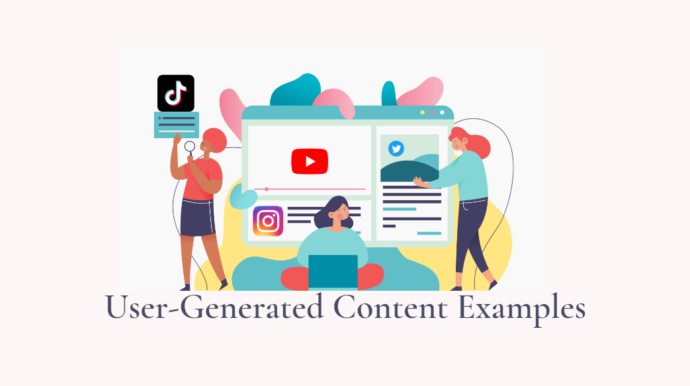14 User-Generated Content Examples – Why is UCG important in 2023?
- What is user-generated content?
- 14 User-generated content examples
- What are the benefits of content created by users?
- Conclusion
User-generated content examples are used by PepsiCo, Netflix, Apple, Disney, and many more companies in their marketing strategies.
If these giants are doing it, why isn’t your company?
Discover the power of user-generated content and unleash its potential for your brand.
What is user-generated content?
User-generated content refers to a marketing strategy where content created by customers is on behalf of a company.
This can include various types of content following certain guidelines provided by the company.
For instance, social media posts, videos, pictures, and reviews, or testimonials.
User-generated content is different than traditional marketing approaches. Because it is generated by the online community of customers themselves, rather than being created by the company.
The customers can decide what content they want to submit This way they add an authentic and diverse perspective to the brand’s marketing efforts.
Let’s dive into user-generated content examples and see which one you like the most!
14 user-generated content examples
1.) “Share a Coke” campaign of Coca Cola
Coca-Cola’s “Share a Coke” campaign remains an unforgettable example of user-generated content (UGC). You surely recall this iconic initiative!
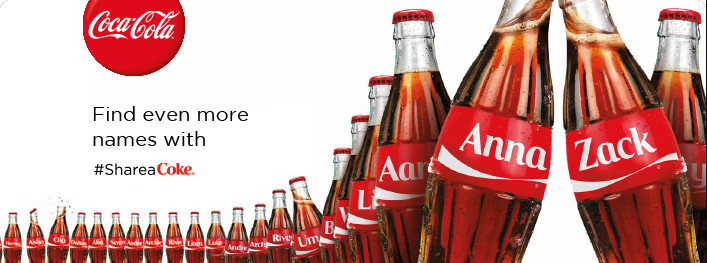
In 2011, Coca-Cola introduced a groundbreaking idea. They printed the most popular male and female names in Australia (around 150 names) on their bottles.
The aim was simple yet brilliant—to encourage people to share a Coke with their loved ones.
The response was astounding!
People went wild for personalized bottles, capturing thousands of photos to share on social media channels. The trend quickly spread to 80 other countries, with social media platforms flooded by individuals proudly showcasing their Coke-sharing moments.
“Share a Coke” harnessed the power of UGC campaigns, involving the target audience and creating an immersive brand experience.
This stands as a great example for well-executed user-generated content in influencer marketing and brand engagement.
2.) #ShotoniPhone campaign of Apple
Do you remember when iPhone users expressed disappointment with the quality of their cameras?
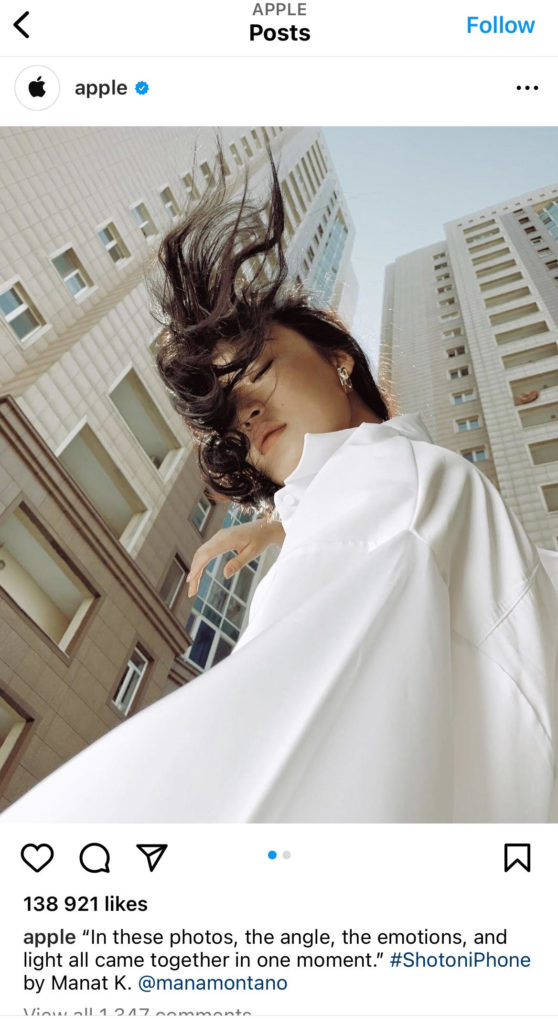
Well, Apple came up with a fantastic solution to address this concern.
Recognizing that customers weren’t satisfied with the average camera performance, especially in low-light conditions, Apple launched an impressive UGC campaign called “Shot on iPhone.”
The goal was to regain the trust of their users. Moreover, to remind everyone about what makes an iPhone truly special: its remarkable ability to capture stunning photos.
Apple invited professional users to take photos in challenging low-light situations using their iPhones. These remarkable shots were then shared online for the world to see. On platforms like YouTube, or Instagram under the hashtag “Shot on iPhone.”
Through the “Shot on iPhone” campaign, Apple successfully demonstrated the quality of their camera and invited users to capture and share their own moments.
It was a good way to rebuild brand loyalty and reaffirm the iPhone’s position as a leader in smartphone photography.
3.) Starbucks’ WhiteCupContest
Let’s take a journey back to 2014 when Starbucks introduced an amazing campaign called the #WhiteCupContest.
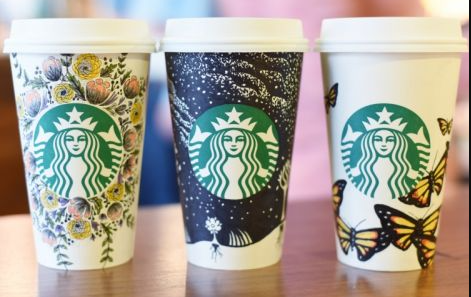
This contest took place on Twitter and encouraged customers to showcase their artistic and creative talents. They invited customers to draw on Starbucks’ signature white cups.
What made this contest even more exciting was that the winning designs would be used as inspiration for future cup designs by Starbucks themselves!
This unique opportunity ignited a wave of inspiration among participants, giving them a chance to leave their artistic mark on Starbucks’ ceramic ware.
In response to the success of the #WhiteCupContest, Starbucks continued their creative endeavors in 2016 with a brand new contest called the #RedCupArt challenge.
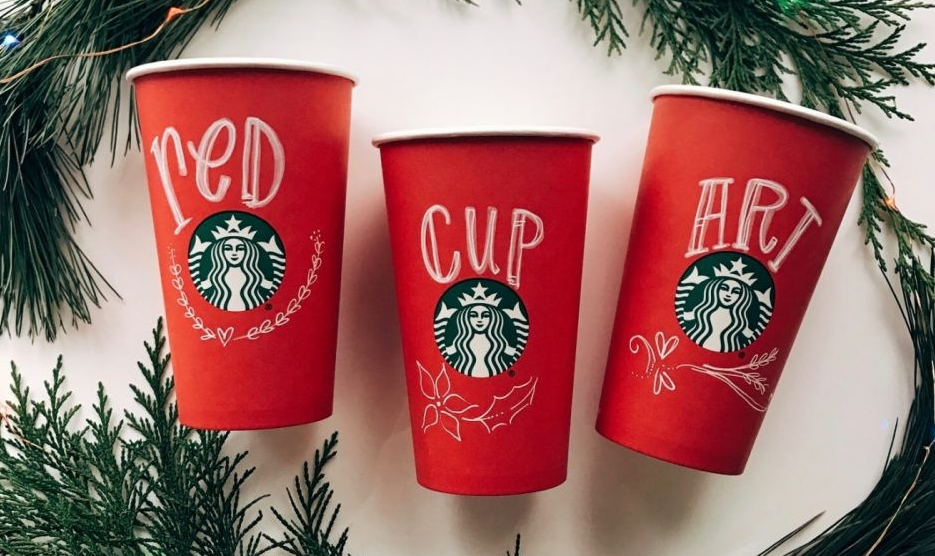
This time, the coffee giant launched the contest using the hashtag, inviting customers to express their creativity on the iconic red cups. The response was overwhelmingly positive, generating a flurry of activity on social media sites like Twitter and Instagram.
These user-generated content campaigns have proven to be a winning formula for Starbucks.
4.) Glossier’s Instagram campaign
Let’s talk about Glossier, a beauty brand that has successfully harnessed the power of consumer-generated content to spread the word about their products.
Unlike traditional marketing that relies on expensive models and carefully curated product shots, Glossier puts the spotlight on its customers.
Glossier recognizes that real beauty lies within its diverse customer base. Therefore they leverage the power of these individuals to promote its brand.
One of the user-generated content examples of Glossier’s success is seen with the launch of their Mega Greens Galaxy Masks.
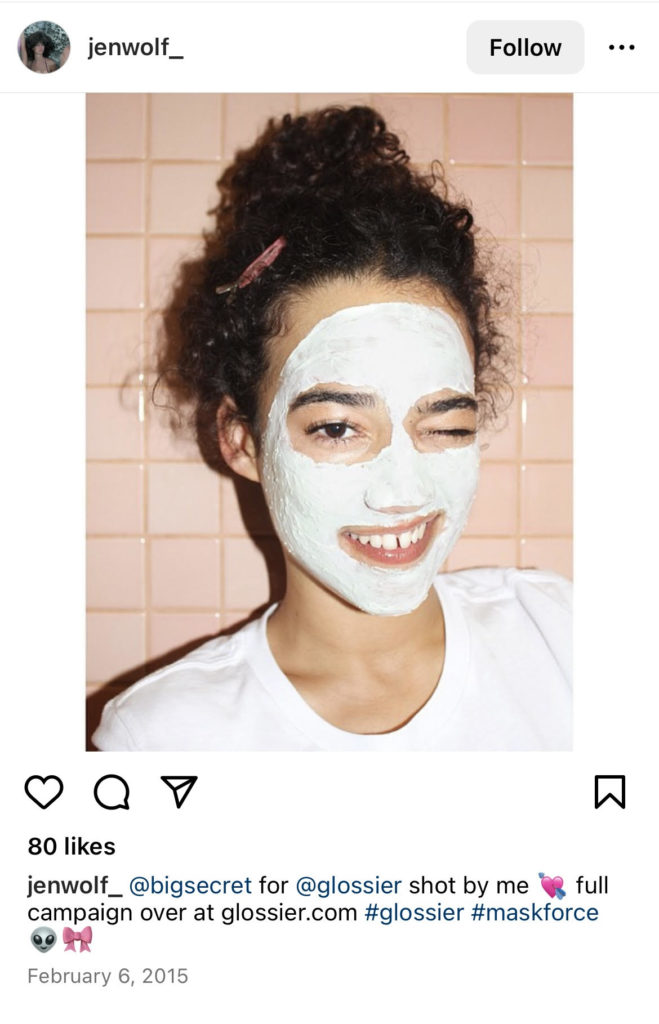
Thousands of customers enthusiastically shared photos of themselves wearing the mask, accompanied by the hashtag #MaskForce.
Glossier capitalized on this wave of engagement by reposting these photos. This amplified the sense of community and sparking even greater enthusiasm among users.
Customers trust and resonate with the authentic experiences shared by their peers, making Glossier’s approach an effective and engaging UGC marketing strategy.
5.) #WanderlustContest of National Geographic
National Geographic successfully executed a powerful user-generated content campaign, gaining more followers, participants, and high engagement rates in an original way.
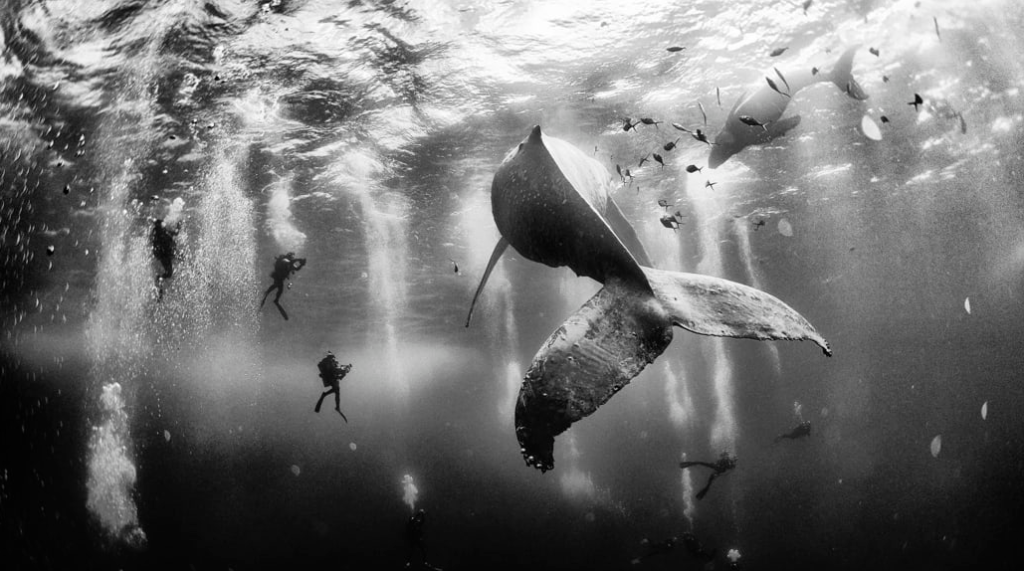
Their Wanderlust Contest encouraged people to share their best nature photos using the #WanderlustContest hashtag.
The response was overwhelming, making it a popular and widely participated event.
The winner’s award was a remarkable 7-day trip for two to Yosemite National Park, known for its stunning views that made for picturesque shots shared by contestants.
This UGC campaign effectively tapped into people’s love for the outdoors and the allure of captivating imagery.
National Geographic’s ability to engage their audience members through user-generated content demonstrated the potential of fostering a community united by a shared passion for nature and photography.
6.) Calvin Klein’s “MyCalvins” campaign
Creating user-generated content (UGC) campaigns is an incredibly effective marketing strategy for fashion brands, leading to increased traffic, conversions, and return on investment (ROI).
An iconic one of the user-generated content examples is Brooke Shields’ memorable whisper, “Nothing comes between me and my Calvins,” which fostered a global sense of connection through underwear.
The tagline resurfaced when Calvin Klein prompted people on Instagram to share what #MyCalvins meant to them.
They challenged individuals wearing briefs to post a photo with the tagline: “I _____ in my Calvins.”
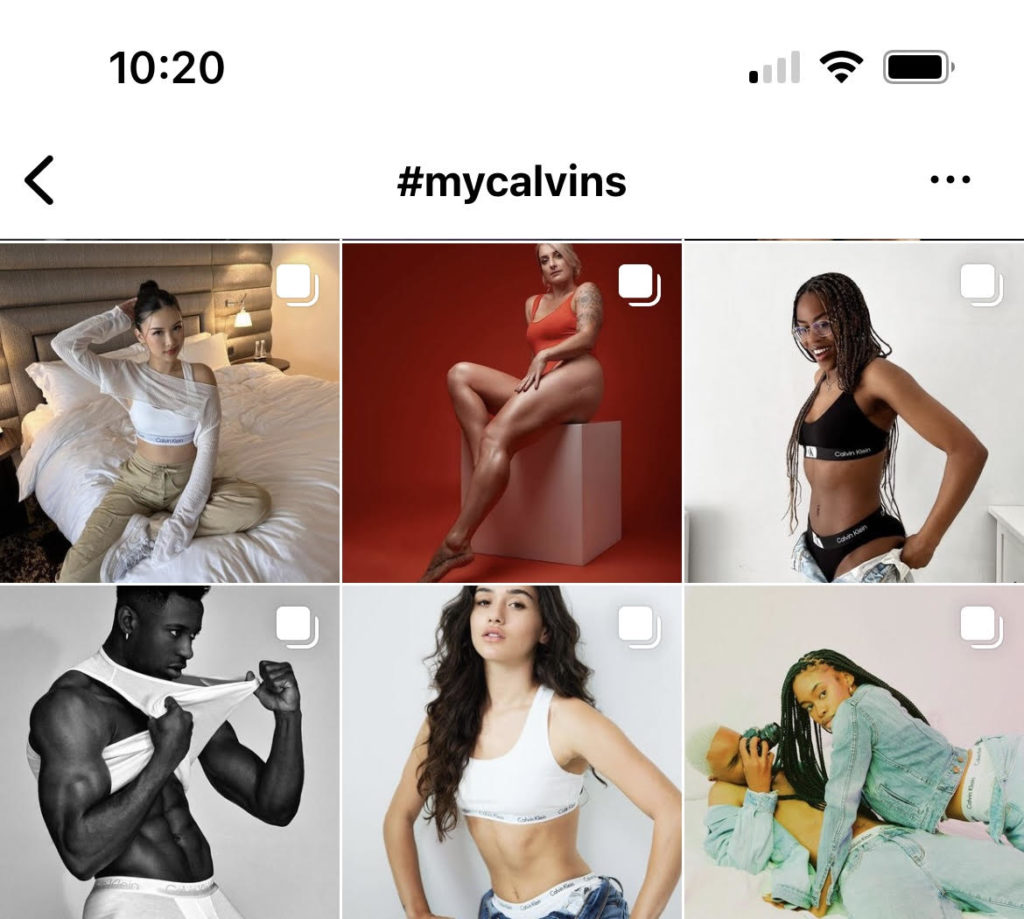
Within just a few months, the hashtag #MyCalvins went viral on Instagram, accumulating over 190,000 tagged photos from enthusiastic UGC creators.
Calvin Klein’s campaign struck a chord with young people, resonating more deeply than influencer posts or paid advertisements ever could.
As a result, the brand swiftly gained millions of followers across various platforms, including Facebook and Twitter.
The success of the #MyCalvins campaign serves as a testament to the power of UGC in the fashion industry. By involving their audience and inspiring them to share their own experiences, Calvin Klein amplified their brand message and gained a devoted following in no time.
7.) Spotify’s campaign: #FindYourFeels
In September 2021, Spotify launched a creative influencer campaign to connect with Gen Z through the emotional power of music.
The objective was to increase brand love and reverse a decline in monthly active listeners.
Making user-generated content with influential figures, Spotify provided a platform for discussing the importance of music in their lives on social channels like YouTube, TikTok, and Instagram.
The campaign, led by Acne London with content direction by Louis Bryant, encouraged Gen Z to explore and share their diverse emotions using Spotify’s wide range of genres and songs.
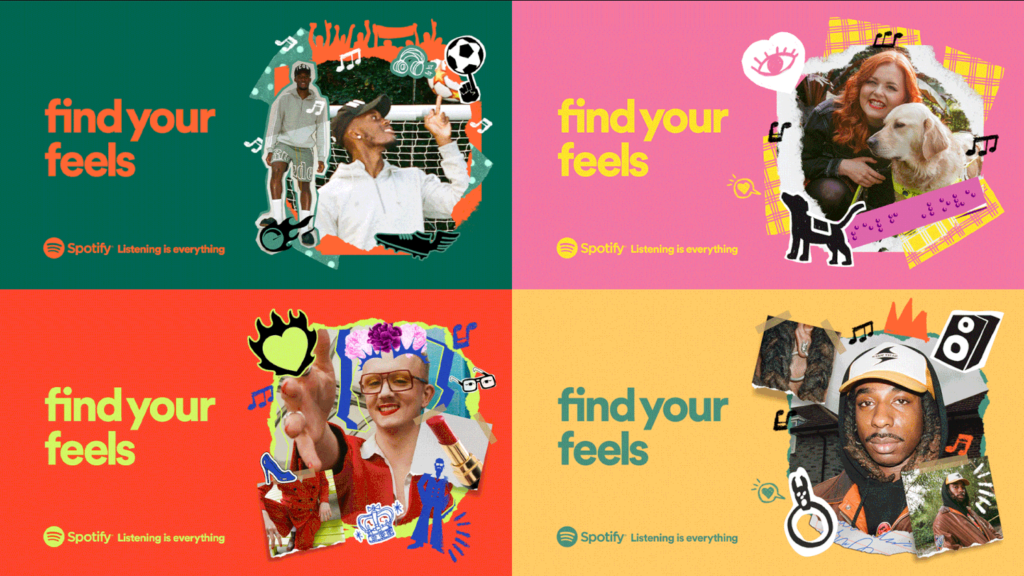
The campaign successfully deepened brand love among 18 to 24-year-olds and boosted monthly active listeners by 91K.
It exemplified the impact of user-generated content and influencer partnerships in connecting with Gen Z’s desire for self-expression and emotional connection.
8.) #AsSeenOnMe from Asos
In 2014, ASOS introduced the “As Seen on Me” feature on its website.
Customers who purchased clothing from ASOS were encouraged to share pictures on social media accounts wearing their garments using the hashtag #AsSeenOnMe.
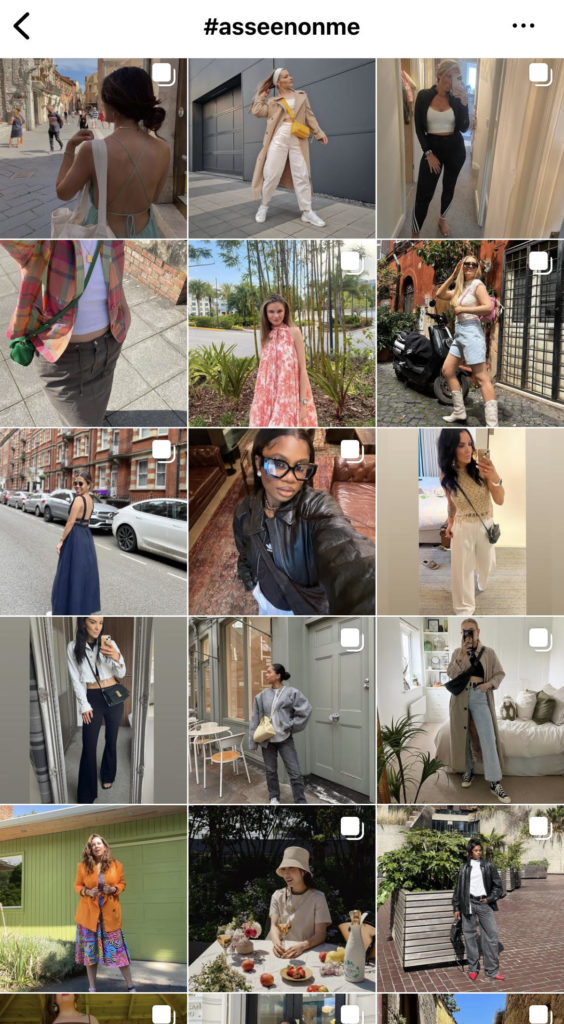
This social media-driven campaign showcased an aspirational lifestyle, making it easy for consumers to proudly display their purchases and expose their audience to ASOS’s offerings.
The use of user-generated content (UGC) through the hashtag campaign on Instagram allowed ASOS to establish trust by leveraging “social proof.”
The authenticity to share user-generated content resonated with up to 76% of ASOS’s audience, surpassing the impact of other marketing campaigns.
This UGC campaign resulted in improved penetration rates and increased sales for ASOS. They experienced a remarkable 25% growth in the number of active consumers and a 2% increase in the average shopping cart value.
9.) Chipotle’s Lid Flip Challenge
Chipotle actively engages with young people through its app and delivery system, particularly targeting Gen Z.
One of their notable user-generated content examples was the Chipotle Lid Flip Challenge on TikTok.
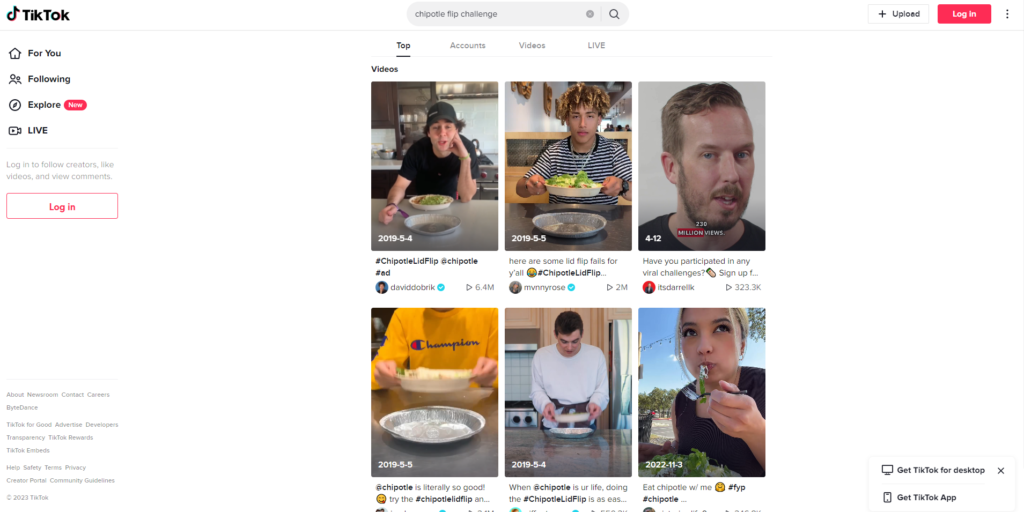
To kick off the campaign and raise awareness of free delivery for Cinco de Mayo, Chipotle issued the challenge itself.
Thousands of UGC creators participated by showcasing their own creative interpretations in many forms of the challenge. The contest garnered significant attention and participation, resulting in 111,000 videos recorded within the first six days.
The hashtagged videos associated with the challenge reached over 300 million views, although it’s worth noting that not all videos necessarily related directly to the challenge.
Some users engaged in hashtag spamming to increase views, which can make it challenging to filter the desired information when searching for a specific hashtag.
Despite these challenges, Chipotle’s user-generated content campaign successfully engaged Gen Z, driving impressive results and showcasing the power of UGC in reaching and resonating with younger audiences.
10.) Airbnb’s Instagram feed
Airbnb’s Instagram feed is undeniably stunning, focusing on sharing captivating photos of the homes available on their platform.
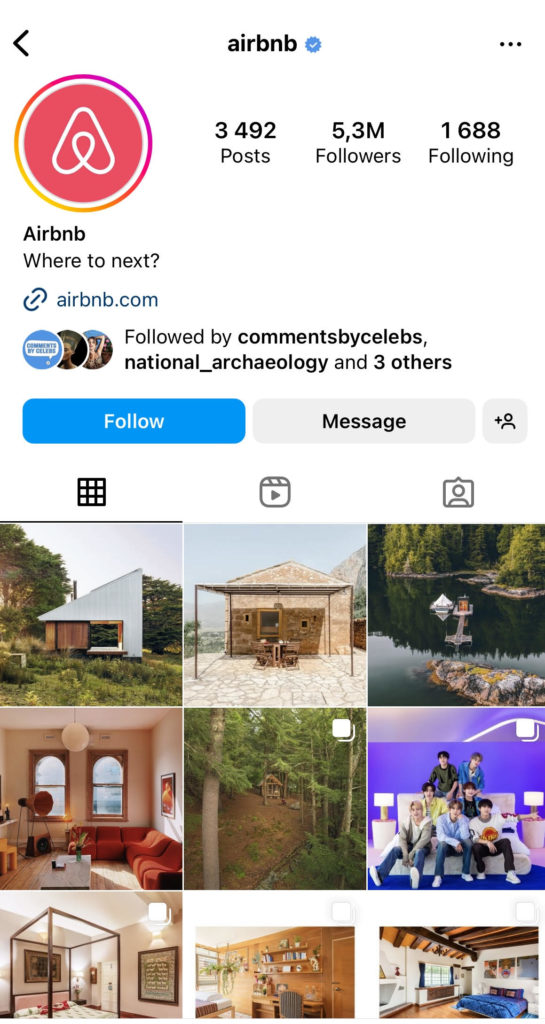
This simple yet effective strategy has garnered them an impressive following of over 5 million on Instagram.
In addition to its Instagram success, Airbnb also utilizes Twitter to engage with its customers through user-generated content (UGC).
One recent example involved inviting their followers to share their experiences of staying in Airbnb accommodations with their pets.
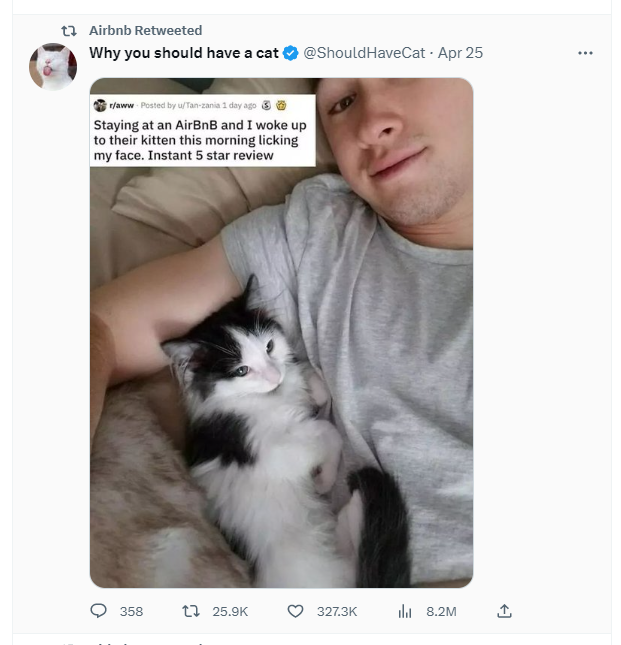
The response was remarkable, with over 3 million pets having visited Airbnb listings in the past year alone.
This UGC initiative not only highlights the pet-friendly aspect of Airbnb but also fosters a sense of community and shared experiences among their followers.
11.) #Ongoing campaign of GoPro
Instagram is brimming with breathtaking user-generated content, and the hashtag #GoPro is a testament to that. With over 50 million posts, it’s evident that GoPro is a fantastic way to share your adventurous pursuits with the world.
Catering to outdoor enthusiasts, GoPro offers robust cameras designed to capture life’s moments on film.
Naturally, people from all corners of the globe are sharing stunning shots that showcase the capabilities of these cameras.
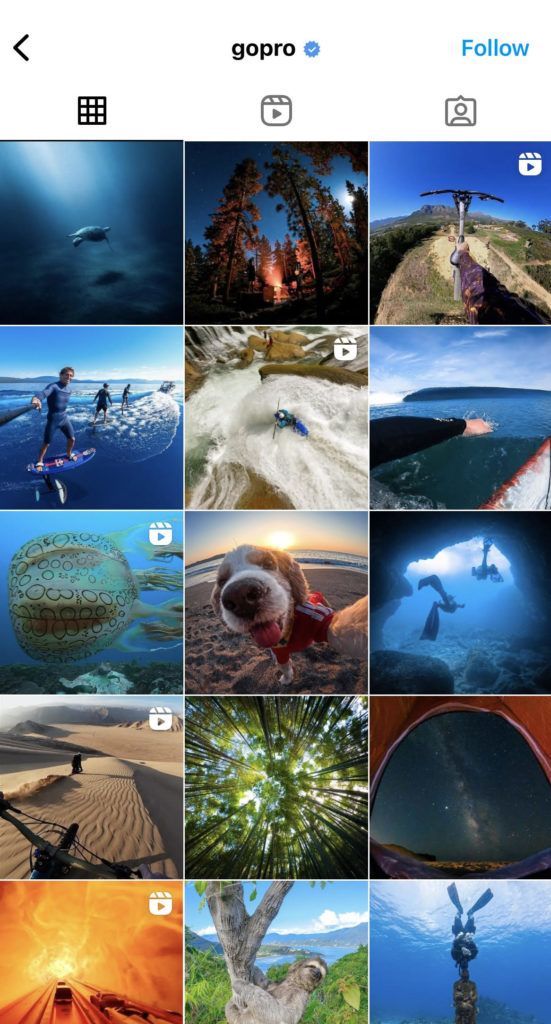
The abundance of user-generated content serves as a compelling demonstration of how GoPro can revolutionize the way you capture images and videos during your explorations.
It not only inspires new customers to make a purchase but also encourages them to share their own creations and appreciate the remarkable feats achieved by others in our society.
Seeing such incredible content on display undoubtedly ignites a desire to own a GoPro and embark on our own extraordinary adventures.
12.) Past Pillsbury recipes
Pillsbury has found an effective strategy by incorporating contests into its online recipe offerings.
These contests not only engage and excite their audience but also generate a wealth of content that can be leveraged for content marketing purposes long after the contests are over.
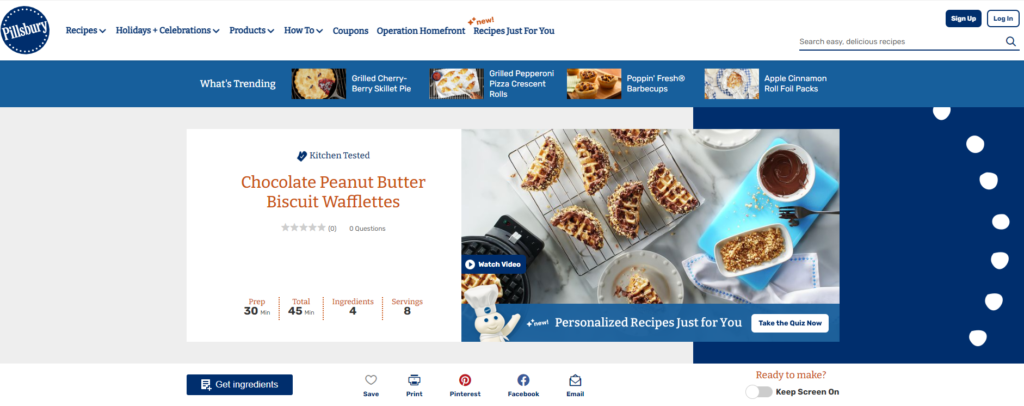
By encouraging users to submit their recipes or participate in cooking challenges, Pillsbury collects a vast amount of user-generated content. This content includes delicious recipes, mouthwatering food photos, and heartwarming stories of culinary creations.
The brand can then use this content in various marketing initiatives to showcase the creativity and passion of their community.
Among the user-generated content examples this approach benefits from the content obtained and these contests become a valuable asset for Pillsbury’s long-term marketing strategy.
13.) Radio Disney asking for suggestions
Radio Disney has successfully implemented the concept of utilizing their user base by actively seeking ideas and input from their listeners.
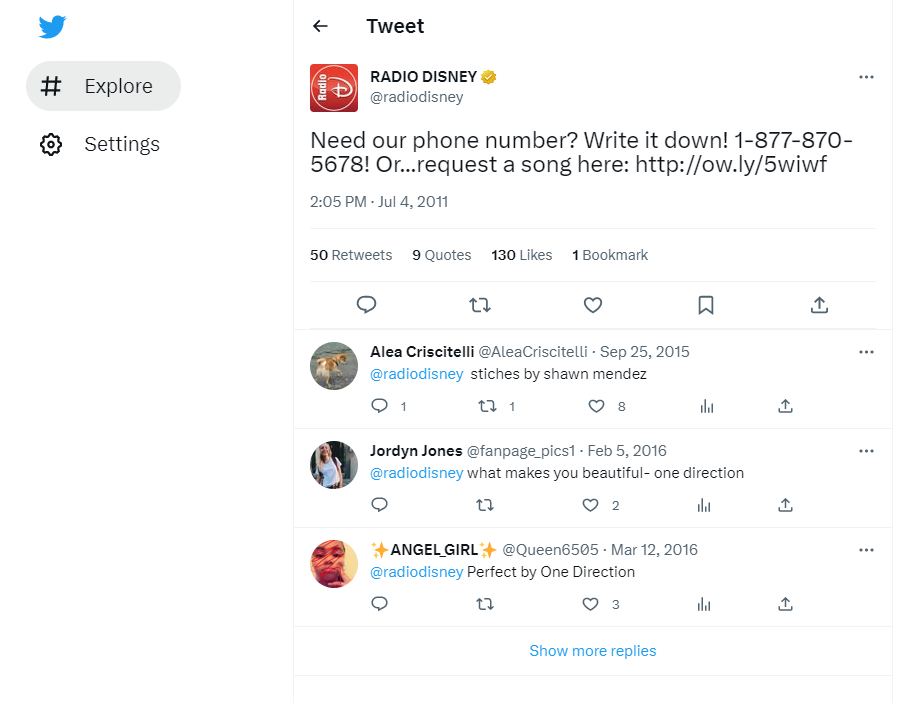
This approach has been widely embraced by radio stations and podcasts, as it allows them to directly involve their audience in shaping brand-generated content.
By inviting their listeners to suggest songs to be played next or topics to be discussed, Radio Disney taps into the collective preferences and interests of their dedicated fanbase.
This engagement not only strengthens the bond between the station and its listeners but also ensures that the content aligns with their tastes and desires.
14.) Doritos’ LegionoftheBold hashtag campaign
Doritos engages users with doritoslegionofthebold.com, a platform for creating branded images and videos.
Fan-generated content, like snack-centric weather forecasts and playful chip-filled pictures, receives thousands of likes and comments.
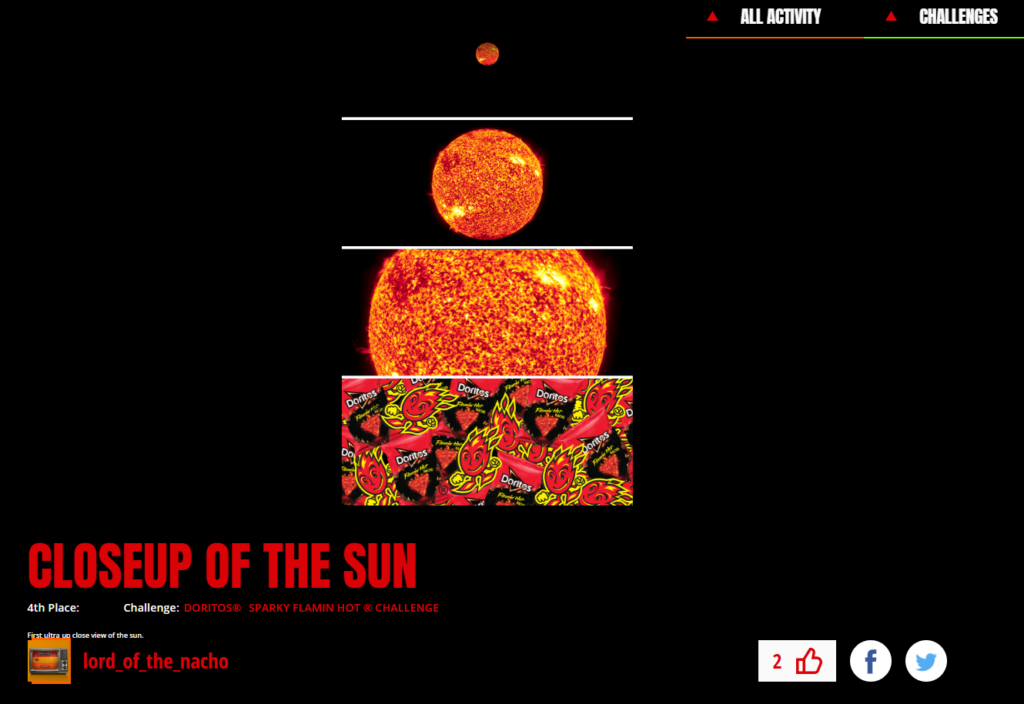
Doritos keeps users involved with public challenges, such as the “oddly satisfying challenge,” offering a chance to be featured on Instagram Stories.
The Legions of the Bold campaign by Doritos goes beyond sharing user-submitted photos of people enjoying their product. The marketing team actively drives users to their website, equipping them with tools to create unique and entertaining UGC content.
This approach not only sparks engagement but also fosters a sense of connection between consumers and the brand.
What are the benefits of a UGC campaign?
Create content with authenticity
User-generated content is perceived as more authentic and trustworthy by consumers. It is created by real customers who have genuine experiences with the product or service, making it more relatable and credible.
Engagement on social media platforms
User-generated content encourages active participation from customers, fostering a sense of community and engagement. It creates a platform for customers to share their stories, opinions, and creativity, leading to increased interaction with the brand.
Cost-effective marketing
User-generated content marketing is a cost-effective marketing strategy as it relies on customers to create the content. It reduces the need for extensive in-house content creation and advertising expenses while still generating valuable promotional material.
Social proof and trust
When potential customers see others positively engaging with a brand through user-generated content, it serves as proof and builds trust. It validates the brand’s credibility and influences purchase decisions.
Increased reach and brand awareness
User-generated content has the potential to reach a wider audience. When customers share their content on social media and other platforms, it expands the brand’s reach and exposes it to new customers, increasing overall brand awareness.
Diverse content and fresh ideas
User-generated content brings in diverse perspectives, creativity, and fresh ideas. Customers can provide unique insights and showcase different use cases, adding depth and variety to the brand’s content library.
Conclusion
Product reviews are essential for online stores. Instagram hashtags and social media advertisements work wonders for all kinds of businesses.
These instances of user-generated content demonstrate that marketing can be both cost-effective and deeply human, fostering meaningful connections.
Which one of the user-generated content examples is your favorite? Let us know in the comments!
